Ever sat scrolling through those same tired Insta photos of the Taj Mahal and wondered if there’s more to India than what your feed shows you? Spoiler alert: there absolutely is.
While everyone else is fighting for selfie space at Goa’s beaches, a whole different India waits quietly in the shadows – one with secret lakes, forgotten temples, and villages where time seems frozen.
These hidden gems in India aren’t just places; they’re experiences that haven’t been filtered, hashtagged, or influencer-approved to death. They’re real, raw, and ridiculously beautiful.
I’ve spent years finding spots that don’t make the guidebooks, and what I discovered might make you rethink your entire bucket list.
Ready to see the India that 99% of travelers miss completely?
Discovering the Untouched Beauty of Northeast India
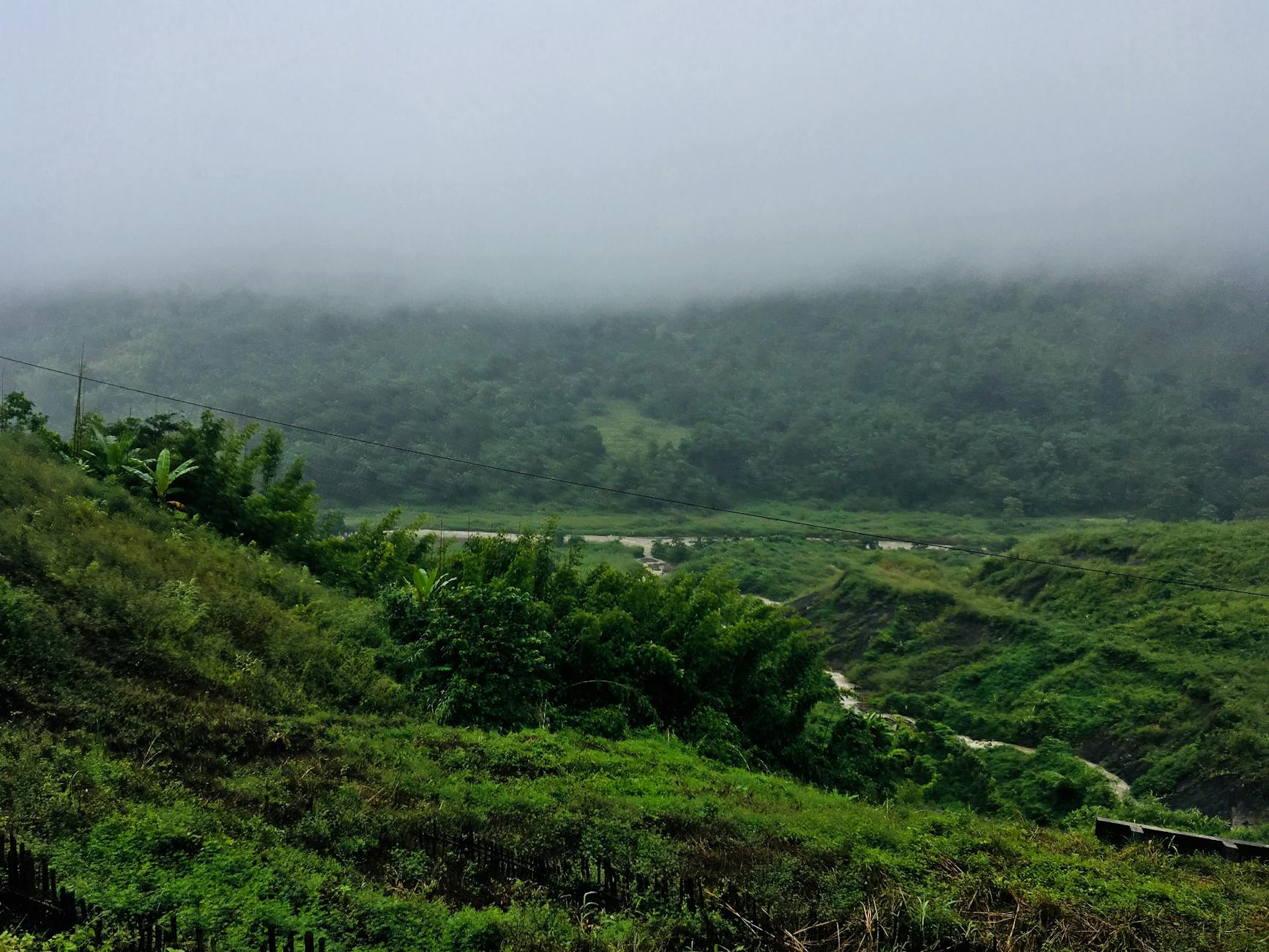
Majuli Island: The World’s Largest River Island
Ever been to a place that feels like it’s stuck in time? That’s Majuli for you. This massive river island in Assam isn’t just any island—it’s the world’s largest river island, sitting pretty on the mighty Brahmaputra.
What makes this hidden gem special is how untouched it feels. Unlike the crowded beaches of Goa, here you’ll find peace, endless paddy fields, and colorful monasteries called “satras” that showcase the unique Assamese culture.
The locals (mostly from the Mising tribe) will welcome you into their bamboo homes raised on stilts—smart design to handle the annual floods. Their handloom skills? Mind-blowing. Watch them weave magic with traditional techniques passed down for generations.
Visit during Raas Leela (November) and you’ll see mask-making artisans creating incredible pieces that tell stories from Hindu mythology. These masks aren’t tourist trinkets—they’re part of living traditions that have survived for centuries.
The sunrise here? Pure magic. Wake up early, head to the riverbank, and watch the golden light spill across the water. No Instagram filter needed.
Ziro Valley: Home to the Unique Apatani Tribe
Tucked away in Arunachal Pradesh, Ziro Valley feels like another planet. This UNESCO World Heritage Site contender isn’t on most travelers’ radar—and that’s exactly why you should go.
The Apatani tribe steals the show here. The older women sport facial tattoos and massive nose plugs—a practice with fascinating history. Legend has it they did this to look less attractive to raiders from neighboring tribes. Today, it’s a mark of their unique cultural identity.
Their rice cultivation technique? Mind-blowing. They’ve perfected a system that combines rice farming with fish culture in the same fields. No pesticides, no machines—just centuries-old wisdom that environmental scientists now study.
The landscape rolls out like a green carpet between pine-covered hills. During September, music lovers flock here for the Ziro Festival—India’s answer to Coachella, but way more intimate and set against breathtaking mountain views.
Mawlynnong: Asia’s Cleanest Village with Living Root Bridges
Think a village can’t be jaw-dropping? Think again. Mawlynnong in Meghalaya isn’t just pretty—it’s been crowned Asia’s cleanest village. Plastic bags? Banned. Bamboo waste bins? Everywhere. The locals sweep the streets daily like it’s second nature.
But the real showstoppers are the living root bridges. The Khasi people literally train tree roots to grow across streams, creating natural bridges that get stronger with time. Some are over 500 years old and can hold 50 people at once. Try finding that in your typical tourist spot!
The “Sky View” bamboo platform offers a peek into neighboring Bangladesh. Climb up, and you’ll see endless green rolling into the horizon.
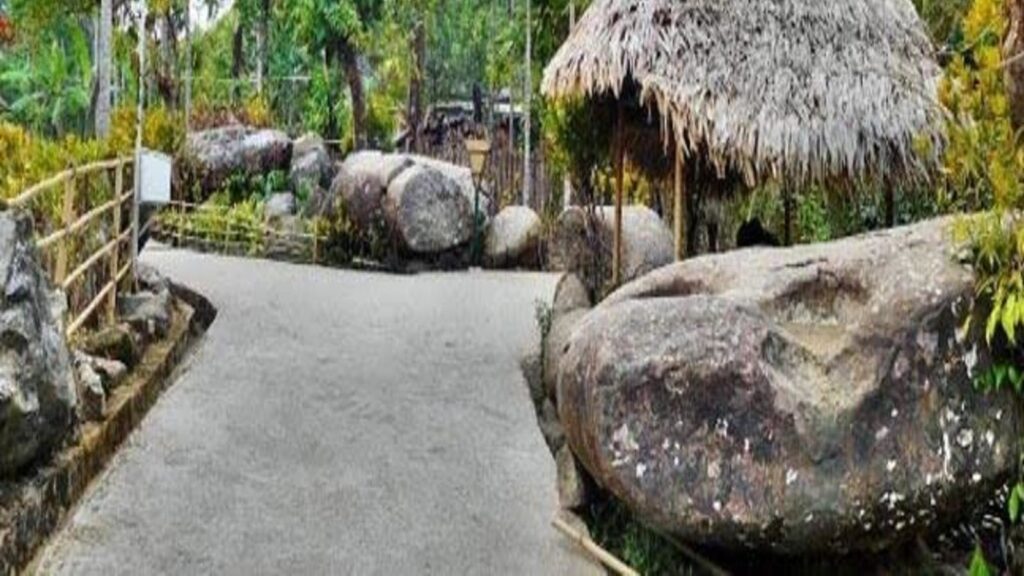
Dzükou Valley: The Valley of Flowers Beyond Nagaland
Perched between Nagaland and Manipur at about 2,500 meters, Dzükou Valley is what dreamscapes are made of. Unlike crowded mountain destinations, this valley stays mysteriously under the radar.
During summer, the entire valley transforms into a sea of wildflowers—pink lilies everywhere. The carpet of white, pink, and yellow blooms against emerald hills makes every hiker stop in their tracks.
The trek isn’t a walk in the park—you’ll huff and puff for about 2-3 hours. But that first glimpse of the valley? Worth every drop of sweat. Camping here under star-filled skies beats any five-star hotel experience.
Winter brings its own magic when occasional snow dusts the valley floor. The best part? You might have this paradise almost entirely to yourself—a rare luxury in today’s over-traveled world.
Secret Coastal Retreats Beyond Goa

Diu: Portuguese Heritage Meets Pristine Beaches
Tired of Goa’s crowded shores? Diu is that magical coastal escape nobody’s talking about. This tiny island off Gujarat’s coast packs in Portuguese colonial charm with quiet beaches most travelers completely miss.
Walk through Diu Fort and you’ll feel like you’ve stepped into Portugal, minus the tourist hordes. The massive sea fortress has stood guard since the 1500s, with walls that tell stories better than any guide. Nearby, St. Paul’s Church flaunts some of the finest baroque architecture in India, its white façade practically glowing against the blue sky.
The real showstoppers are the beaches. Nagoa Beach curves like a perfect horseshoe with calm waters that are actually clean (shocking, I know). Jallandhar Beach offers those Instagram-worthy views minus the Instagram crowds. And if you’re feeling adventurous, tiny Ghoghla Beach has some of the clearest waters you’ll find anywhere in India.
Unlike Goa, nobody’s trying to sell you anything here. No persistent beach vendors, no overpriced shacks – just you, golden sand, and the sound of waves.
The best part? Accommodation won’t break the bank. From charming Portuguese-style guesthouses to modern resorts, prices are about half what you’d pay in popular beach destinations.
Gokarna: Sacred Temples and Secluded Shores
Gokarna is what Goa was 30 years ago – before the rave parties and resort chains moved in. This temple town in Karnataka manages to blend spiritual significance with beach bum vibes in the most unexpected way.
The town center revolves around ancient temples where devotees have worshipped for centuries. The Mahabaleshwar Temple houses one of India’s most important Shiva lingams, drawing pilgrims from across the country.
But wander just a bit further and you’ll hit beaches that’ll make you question why anyone bothers with Goa anymore. Om Beach (shaped like the Om symbol) is the most accessible, but the real magic happens when you trek to Half Moon and Paradise beaches. These hidden coves require a sweaty hike through forested headlands, which keeps away the crowds.
The beachside accommodations are refreshingly basic – think bamboo huts and yoga shalas rather than luxury resorts. Most places offer fresh seafood caught that morning, served with your toes in the sand.
Varkala: Cliff-side Paradise in Kerala
Imagine dramatic red cliffs plunging into the Arabian Sea, with a string of cafes and yoga spots perched right on the edge. That’s Varkala for you – an alternative to Goa beaches that actually delivers on the promise of “paradise found.”
Unlike Kerala’s other beaches, Varkala offers that perfect mix of infrastructure and untouched beauty. The cliff-top path stretches for nearly a mile, lined with shops selling everything from Kashmiri handicrafts to beachwear. Check Kerala in 5 days for a travel plan to Varkala.
Below, Papanasam Beach offers both religious significance (a dip here supposedly washes away sins) and perfect swimming conditions. The north end of the beach remains relatively quiet even in peak season, while natural spring waters rich in minerals bubble up at the cliff base.
Mystical Mountain Hideaways
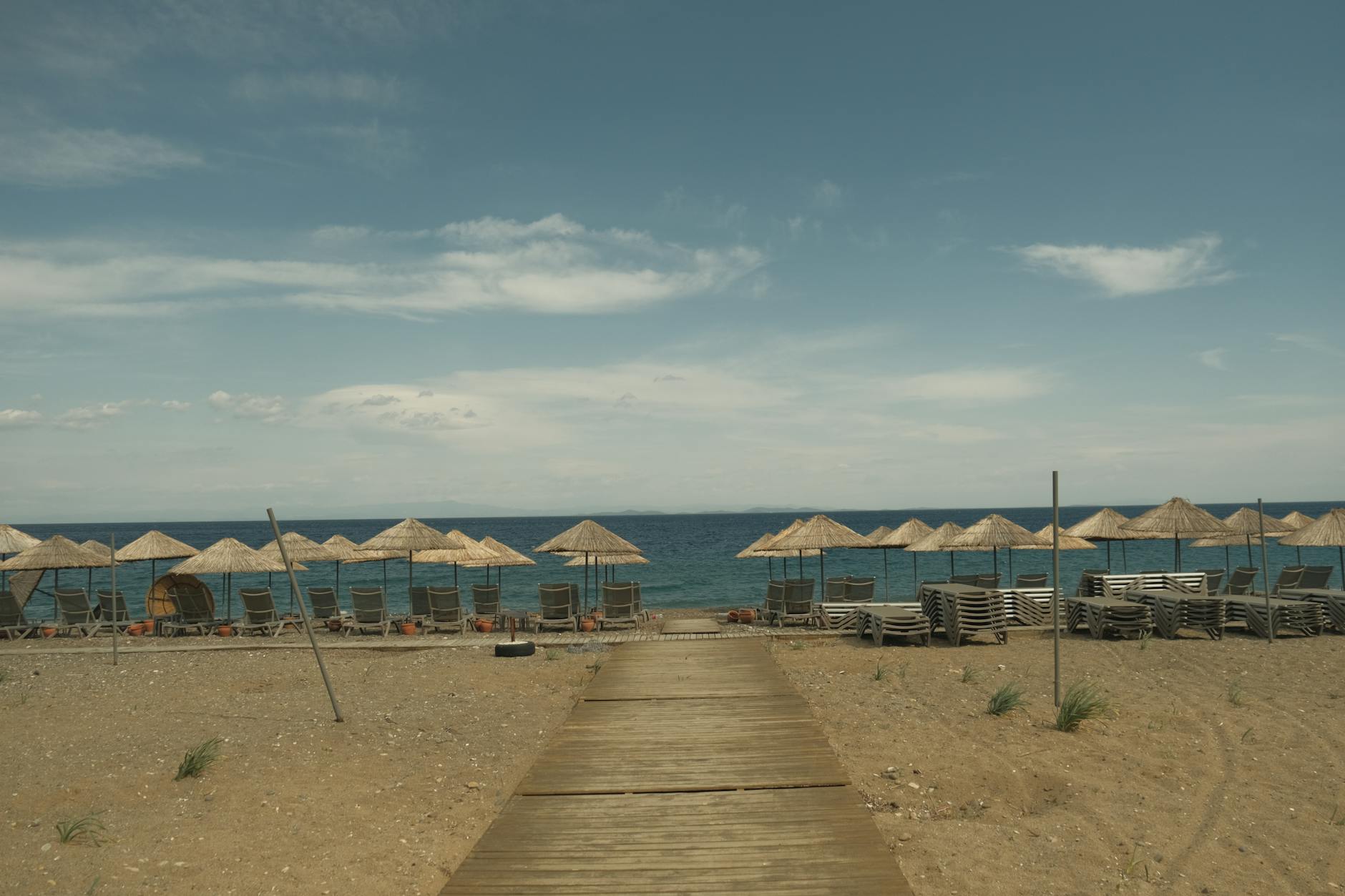
A. Tawang: Tibetan Culture in Arunachal Pradesh
Tucked away in the northeastern corner of India, Tawang is one of those places that’ll make you wonder why it isn’t plastered across travel magazines worldwide. This mountainous paradise sits at a breathtaking 10,000 feet, with prayer flags fluttering against dramatic cloud-capped peaks.
The Tawang Monastery steals the show here—it’s the second largest Buddhist monastery in the world after Potala Palace in Lhasa. When morning mist swirls around its ancient walls and the sound of monks chanting fills the air, you’ll swear you’ve stepped into another dimension.
What most tourists miss is Pangong Tso’s quieter cousin—Ptso Lake. Its crystal-clear waters mirror the surrounding mountains so perfectly you’ll do a double-take. Visit during sunrise when the whole scene glows golden and you’ll have it mostly to yourself.
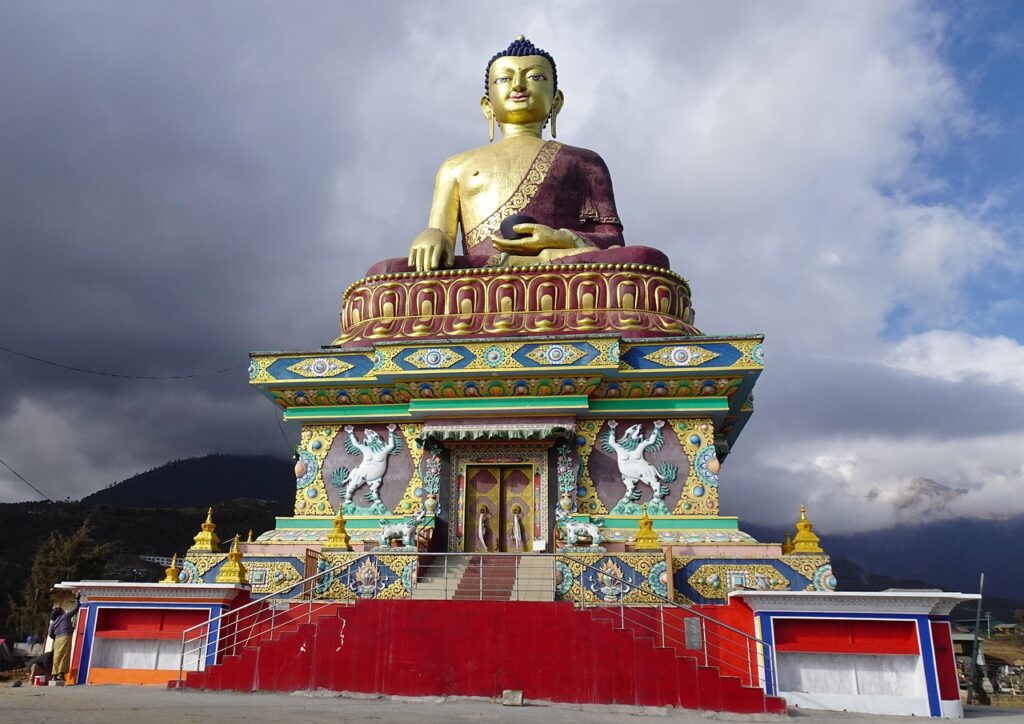
B. Spiti Valley: The Middle Land Between India and Tibet
Spiti isn’t just off the beaten path—it’s practically off the map. This high-altitude desert valley in Himachal Pradesh gets its name from “The Middle Land,” sitting right between India and Tibet. The landscapes here? Honestly, otherworldly. Think barren mountains in shades of rust and gold contrasting with the deepest blue skies you’ve ever seen.
The 1000-year-old Key Monastery clings to a hilltop like something from a fantasy novel. Inside, Buddhist monks go about daily rituals that haven’t changed for centuries. Stay overnight and wake up to butter tea while watching the sun paint the valley in impossible colors.
Road trip enthusiasts, take note: the drive to Spiti through Kunzum Pass will test your nerve and reward you with views that’ll max out your phone storage in minutes.
C. Gurez Valley: Kashmir’s Best-Kept Secret
Kashmir’s famous Dal Lake gets all the attention, but Gurez Valley remains gloriously under the radar. This remote valley near the Line of Control was closed to tourists until recently, which explains why it’s remained so pristine.
The Kishanganga River cuts through meadows so green they look Photoshopped. Ancient wooden houses dot hillsides where the Dard-Shin people preserve a culture that’s barely changed in centuries.
Summer brings wildflowers carpeting the valley floor, while the snowcapped Habba Khatoon peak watches over everything like a sentinel. Named after a poetess who once roamed these hills, the mountain has its own love story woven into local folklore.
D. Chopta: The Mini Switzerland of Uttarakhand
Skip the crowded hill stations of Uttarakhand and head to Chopta instead. This tiny hamlet offers all the mountain magic without the tourist traps.
The trek to Tungnath (the highest Shiva temple in the world) and Chandrashila peak starts here. It’s moderately challenging but wildly rewarding—the 360° Himalayan panorama from the top will literally take your breath away.
In April, the meadows explode with rhododendron blooms, turning the entire landscape into a photographer’s dream. Camp under impossibly starry skies, and you might just hear distant calls of the Himalayan monal pheasant at dawn.
E. Khajjiar: Himachal’s Little Switzerland
They call it India’s Switzerland for good reason—Khajjiar’s lush meadow surrounded by dense deodar forests could easily pass for an Alpine postcard. This tiny saucer-shaped meadow even has official recognition from the Swiss government for its uncanny resemblance.
A small lake sits at the center, reflecting pine trees and clouds, while paragliding opportunities let you soar above it all. The 12th-century Khajji Naga temple adds cultural depth to all this natural beauty.
What makes Khajjiar special isn’t just the views—it’s how quiet it remains compared to nearby Dalhousie. Visit during weekdays and you might have large stretches of this emerald meadow completely to yourself.
Ancient Wonders Off the Tourist Trail
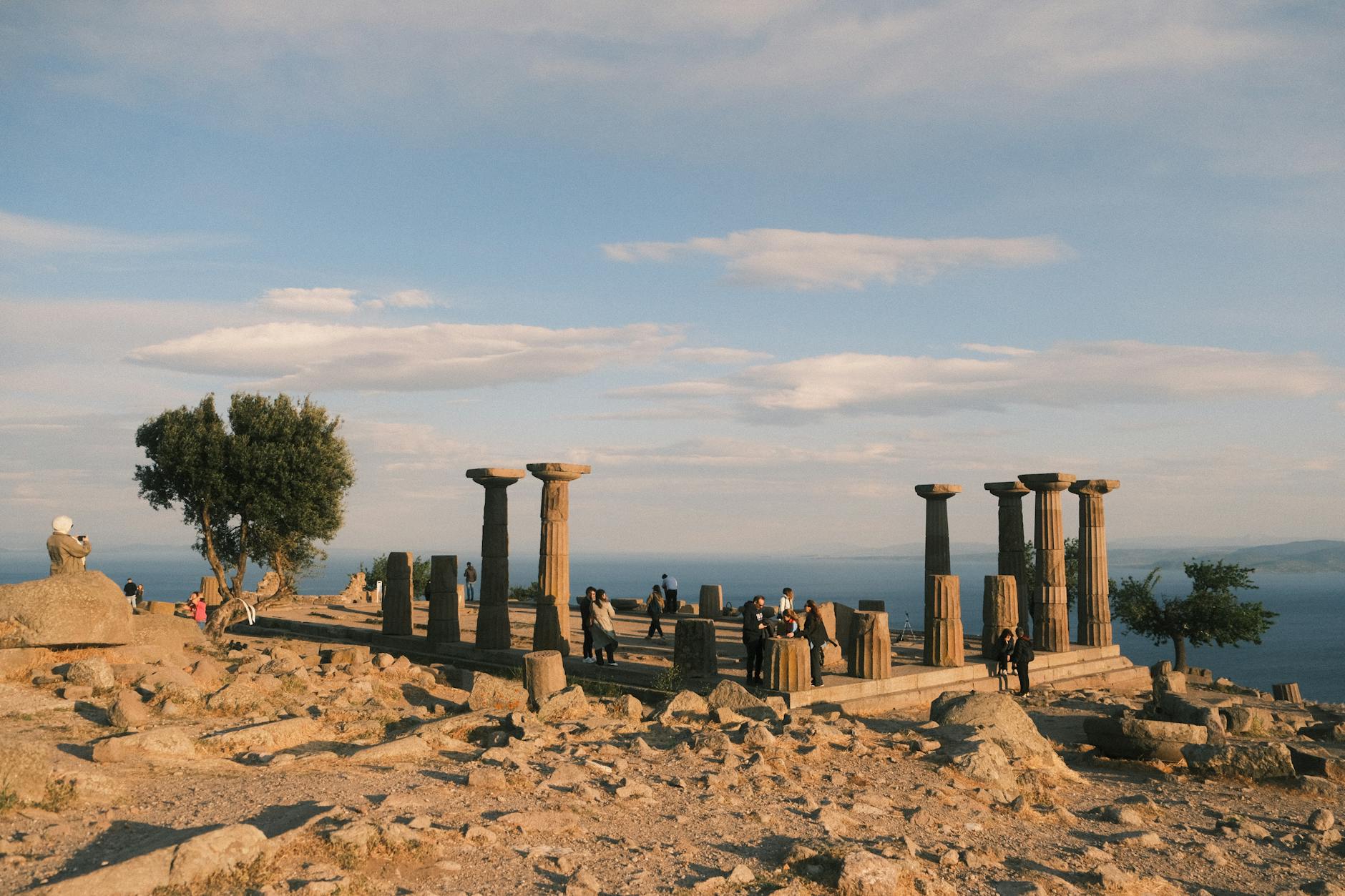
A. Champaner-Pavagadh: Gujarat’s UNESCO Heritage Site
Ever stumbled upon a place so magnificent you can’t believe it’s not crawling with tourists? That’s Champaner-Pavagadh for you.
This archaeological park in Gujarat is one of India’s best-kept secrets. Just a two-hour drive from Vadodara, this UNESCO site combines Hindu and Muslim architecture in ways that’ll make your jaw drop.
The star of the show? Jami Masjid. This 15th-century mosque features intricate stone carvings that would put modern-day sculptors to shame. What’s wild is how empty it usually is. You can wander around, taking all the photos you want without anyone photobombing your shot.
Then there’s Pavagadh Hill with its Kalika Mata Temple perched at 2,600 feet. The trek up is no joke, but trust me, those panoramic views of the Gujarat plains make every sweaty step worth it. Plus, the temple itself dates back to the 10th century. Think about that – a thousand years of prayers in one spot.
Visit Champaner itinerary from Ahmedabad, for a travel plan.
B. Lepakshi: Temple of Hanging Pillars in Andhra Pradesh
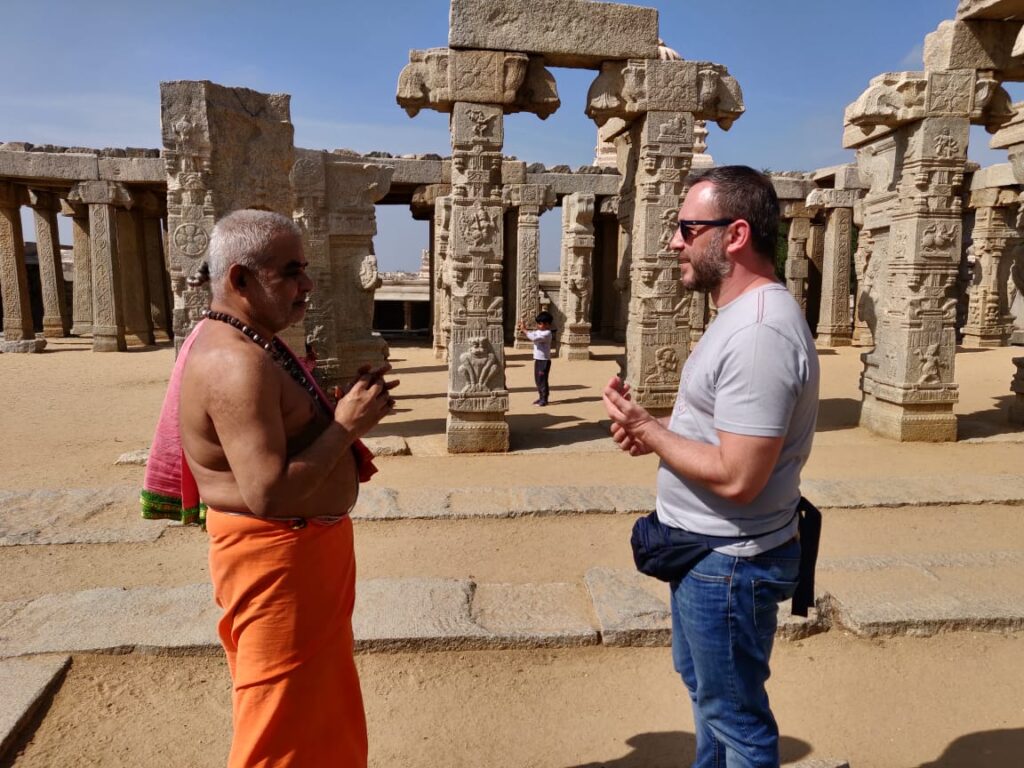
Okay, picture this: massive stone pillars that don’t quite touch the ground. No, it’s not magic – it’s engineering from 500 years ago at the Veerabhadra Temple in Lepakshi.
Located in Andhra Pradesh’s Anantapur district, this 16th-century marvel is criminally underrated. You can literally pass a thin cloth or paper under these hanging pillars. Go ahead, try it – everyone does!
Beyond the gravity-defying architecture, the temple boasts some of India’s best-preserved Vijayanagara paintings. The ceilings are literally plastered with vibrant murals depicting scenes from Hindu epics. And they’ve somehow survived five centuries without Instagram filters.
Don’t miss the massive Nandi (bull) statue nearby. Carved from a single granite stone, it’s reportedly one of the largest in India. And unlike the ones at more popular temples, you won’t have to elbow your way through crowds to get a decent photo.
C. Unakoti: Rock-Cut Sculptures in Tripura
If Indiana Jones were Indian, he’d hang out at Unakoti.
Hidden in the jungles of Tripura in Northeast India, Unakoti (meaning “one less than a crore”) houses massive rock-cut sculptures that date back to the 7th-9th centuries. We’re talking 30-foot-high reliefs of Lord Shiva carved directly into the hillside.
The legend? A traveling sculptor was creating one crore (10 million) deities in a single night, but fell one short before dawn – hence the name. Whether you buy that story or not, the craftsmanship will leave you speechless.
The remoteness of this site in Northeast India means few travelers make the journey. Their loss. During monsoon season, waterfalls cascade over some sculptures, creating a scene straight out of a fantasy movie.
Unlike the roped-off restrictions at popular sites, here you can get up close with history. Just bring decent shoes – the pathway can get slippery – and definitely pack your camera.
Cultural Gems Hidden in Plain Sight
A. Chettinad: Mansions and Cuisine of Tamil Nadu
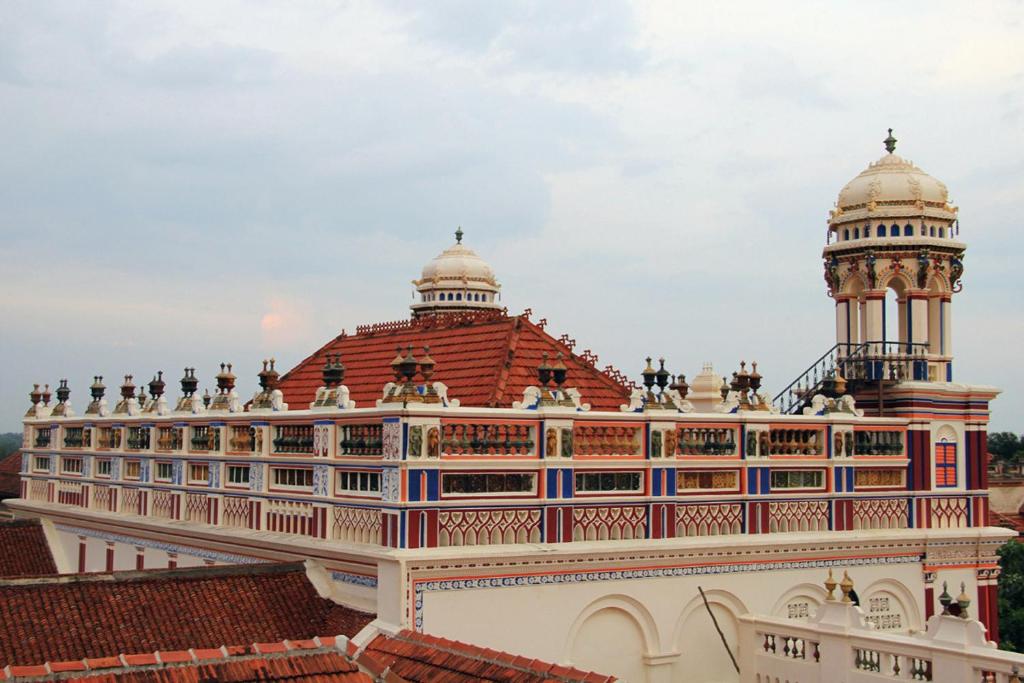
Ever walked into a place and felt like you’ve stepped into another century? That’s Chettinad for you – one of India’s most fascinating cultural gems hiding in plain sight.
The Chettinad region in Tamil Nadu isn’t your typical tourist hotspot. While everyone’s rushing to Chennai or Pondicherry, this cluster of about 70 villages sits quietly, home to some of the most jaw-dropping mansions you’ll ever see.
These aren’t just any homes. We’re talking about palatial structures built by the wealthy Chettiar merchants who made fortunes in Southeast Asia during the 19th century. Picture this: massive courtyards, Burmese teak pillars, Italian marble floors, and Belgian glass windows. The mansions (called nattukottai) showcase a wild mix of European, East Asian, and traditional Tamil influences.
The Athangudi Palace is a must-see – its handmade tiles are so gorgeous you’ll want to rip them up and take them home (don’t do that, seriously).
And don’t get me started on the food. Chettinad cuisine isn’t just spicy—it’s a complex explosion of flavors thanks to a unique blend of spices. The region’s isolation has preserved cooking techniques that are disappearing elsewhere in India. Try the Chettinad chicken curry, and you’ll understand why food enthusiasts consider this area one of India’s hidden culinary treasures.
Check Chettinad Mansions for a suggested tour plan.
B. Shekhawati: Open-Air Art Gallery of Rajasthan
While tourists swarm Jaipur and Udaipur, the Shekhawati region sits quietly in northeastern Rajasthan, sporting the world’s largest concentration of frescos. Yeah, you read that right.
This cluster of small towns and villages is literally an open-air art gallery with hundreds of havelis (mansions) covered in stunning paintings. These wealthy merchant families weren’t just showing off—they were competing with each other to commission the most elaborate artwork.
The frescos date back to the 18th-19th centuries and cover nearly every inch of these buildings. They depict everything from local legends and religious scenes to historical events and, hilariously, the merchants’ fascination with European technology like cars and telephones.
Towns like Mandawa, Nawalgarh, and Fatehpur hold the best examples. In Mandawa, the Hanuman Prasad Goenka Haveli features murals of Europeans in strange hats. The intricate detail will have you staring for hours.
What makes Shekhawati even more special? Unlike crowded tourist traps, you can wander these streets in peace, often having entire havelis to yourself.
Jaisalmer sojourn is a travelogue worth reading.
C. Orchha: Medieval Grandeur in Madhya Pradesh
Orchha is that rare place that makes you wonder, “How is this not crawling with tourists?”
While everyone’s busy taking selfies at the Taj Mahal, this small town in Madhya Pradesh offers medieval architecture that will knock your socks off—without the crowds.
Founded in the 16th century by the Bundela Rajput chief Rudra Pratap Singh, Orchha sits frozen in time on the banks of the Betwa River. The Orchha Fort Complex houses three stunning palaces: Jahangir Mahal, Raj Mahal, and Rai Parveen Mahal. The Jahangir Mahal, built as a symbol of friendship between the Bundelas and Mughals, showcases a perfect blend of Islamic and Hindu architectural styles.
What makes Orchha truly special is how accessible everything is. You can climb up to the tops of temples, explore hidden corners of palaces, and feel like you’re discovering these places for the first time.
At sunset, head to the cenotaphs (chhatris) lining the river. These 14 memorial shrines to Orchha’s rulers create a magical silhouette against the evening sky.
Check Magnificent Orchha from Khajuraho for a travel plan.
D. Nubra Valley: The Valley of Flowers in Ladakh
Hidden beyond the world’s highest motorable pass lies Nubra Valley—a surreal landscape that seems plucked from a fantasy novel.
To reach this lesser-known Indian cultural attraction, you’ll cross Khardung La Pass (18,380 feet) where the air is so thin you’ll feel slightly light-headed. But what awaits is worth every oxygen-deprived moment.
Nubra Valley is a bizarre contradiction—a high-altitude desert with sand dunes surrounded by snow-capped mountains. In the summer months, the valley erupts with wildflowers in every color imaginable, creating a striking contrast against the barren landscape.
The cultural tapestry here is just as fascinating as the scenery. Buddhist monasteries like Diskit and Hunder stand watch over the valley, housing ancient relics and rituals. The Diskit Monastery features a 106-foot tall Buddha statue that gazes serenely across the valley.
What really sets Nubra apart is the blend of cultures. The valley sits on an ancient trade route of the Silk Road, and you can still spot double-humped Bactrian camels—descendants of those used by ancient traders. The local Ladakhi people maintain traditions that have remained unchanged for centuries.
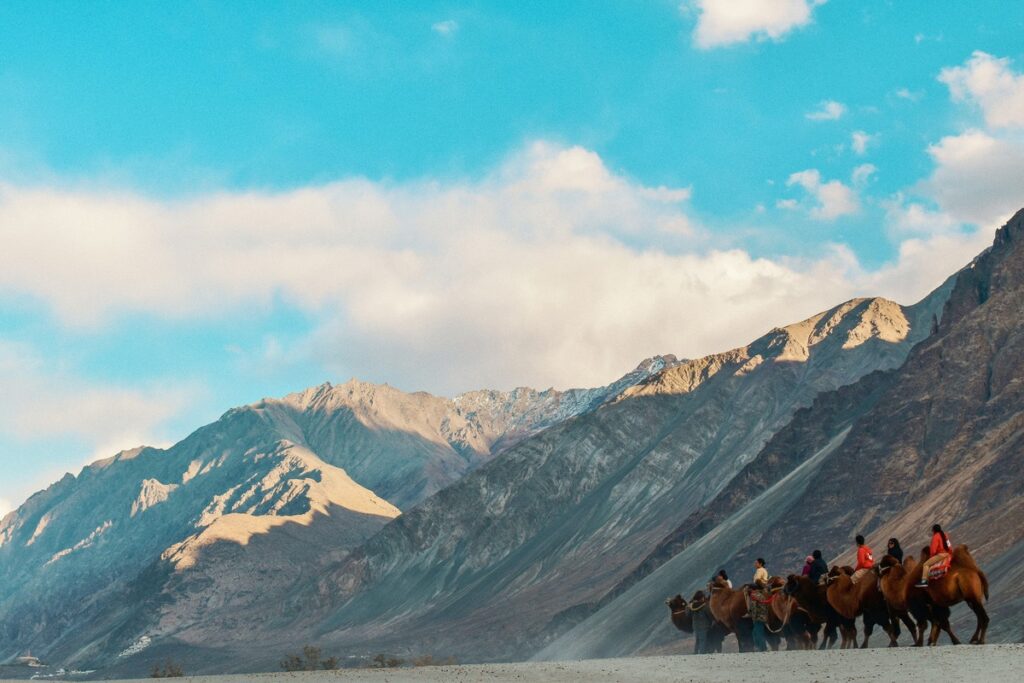
Visit Ladakh travel plan for a suggested itinerary.
Beyond the well-trodden paths of the Taj Mahal and the beaches of Goa, India holds remarkable treasures waiting to be discovered. From the pristine landscapes of Northeast India to secluded coastal havens, mystical mountain retreats, overlooked ancient monuments, and vibrant cultural spaces, these hidden gems offer authentic experiences far from the typical tourist crowds.
As you plan your next Indian adventure, consider venturing beyond the familiar destinations to explore these lesser-known wonders. Each location promises not only breathtaking scenery but also meaningful cultural encounters that reveal India’s incredible diversity and depth. These hidden gems may require extra effort to reach, but the rewards—pristine environments, genuine local connections, and memories free from tourist clichés—make them truly worthwhile destinations.
Discover more from Great Holiday Ideas
Subscribe to get the latest posts sent to your email.